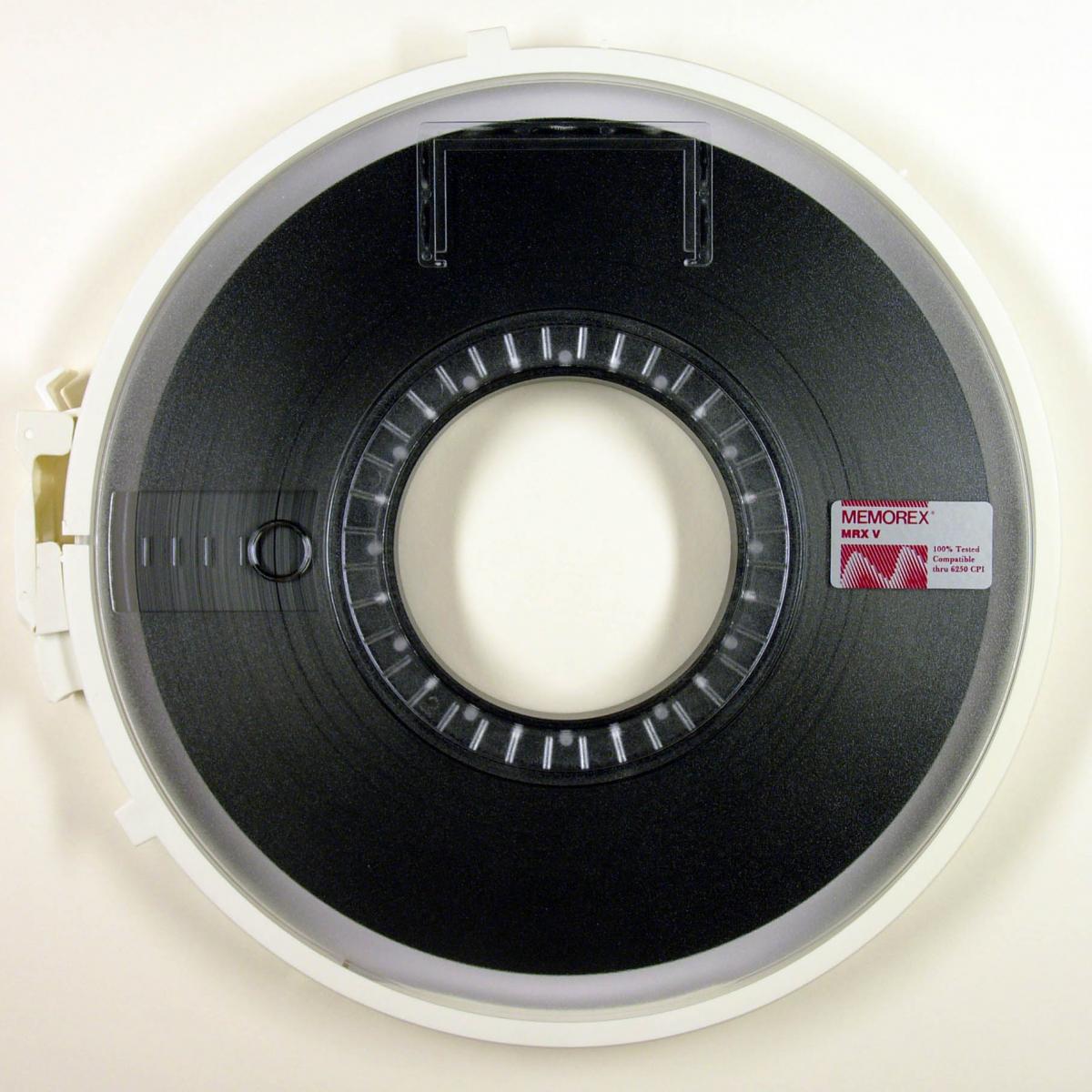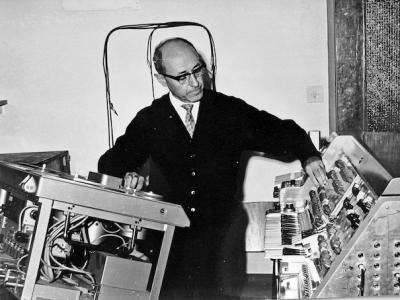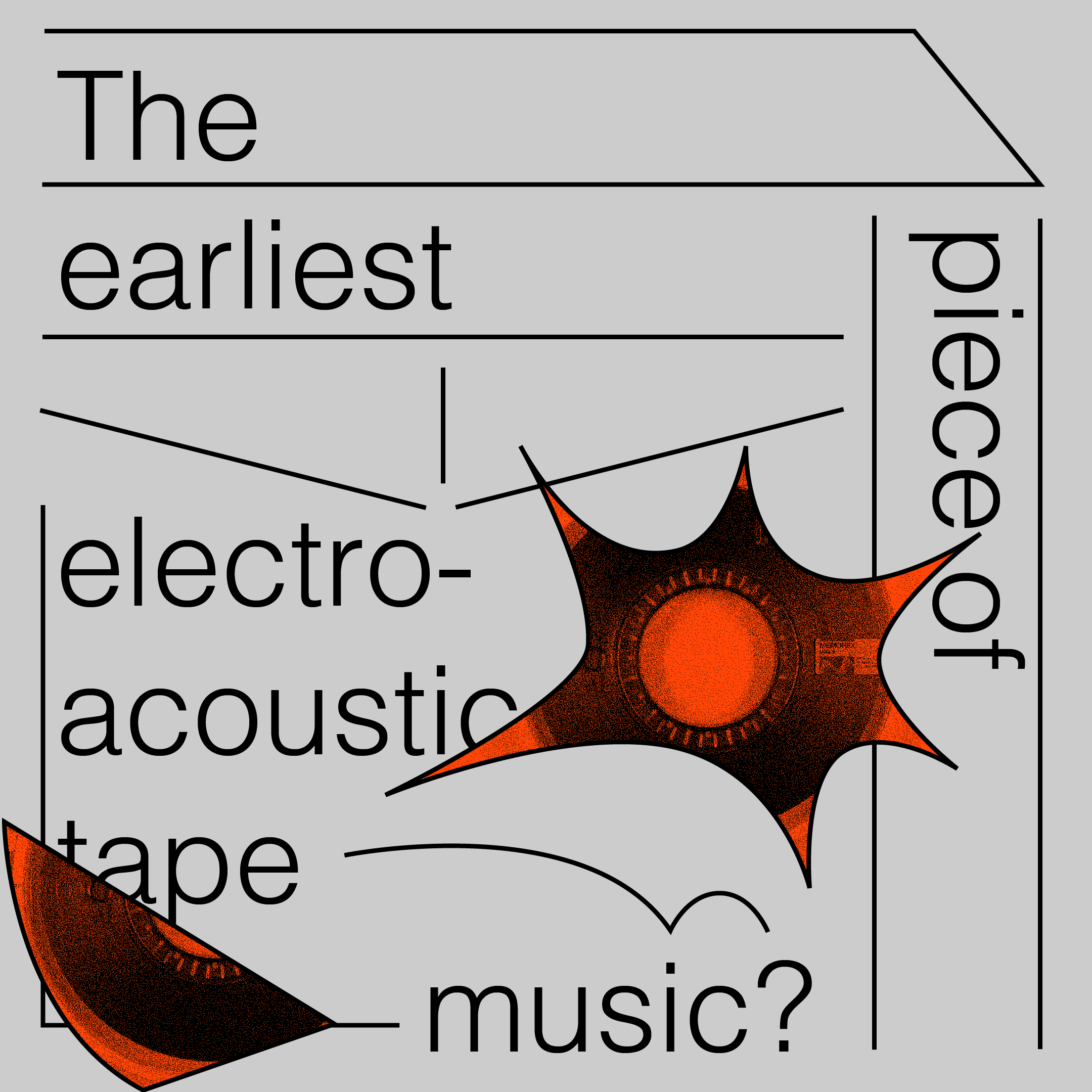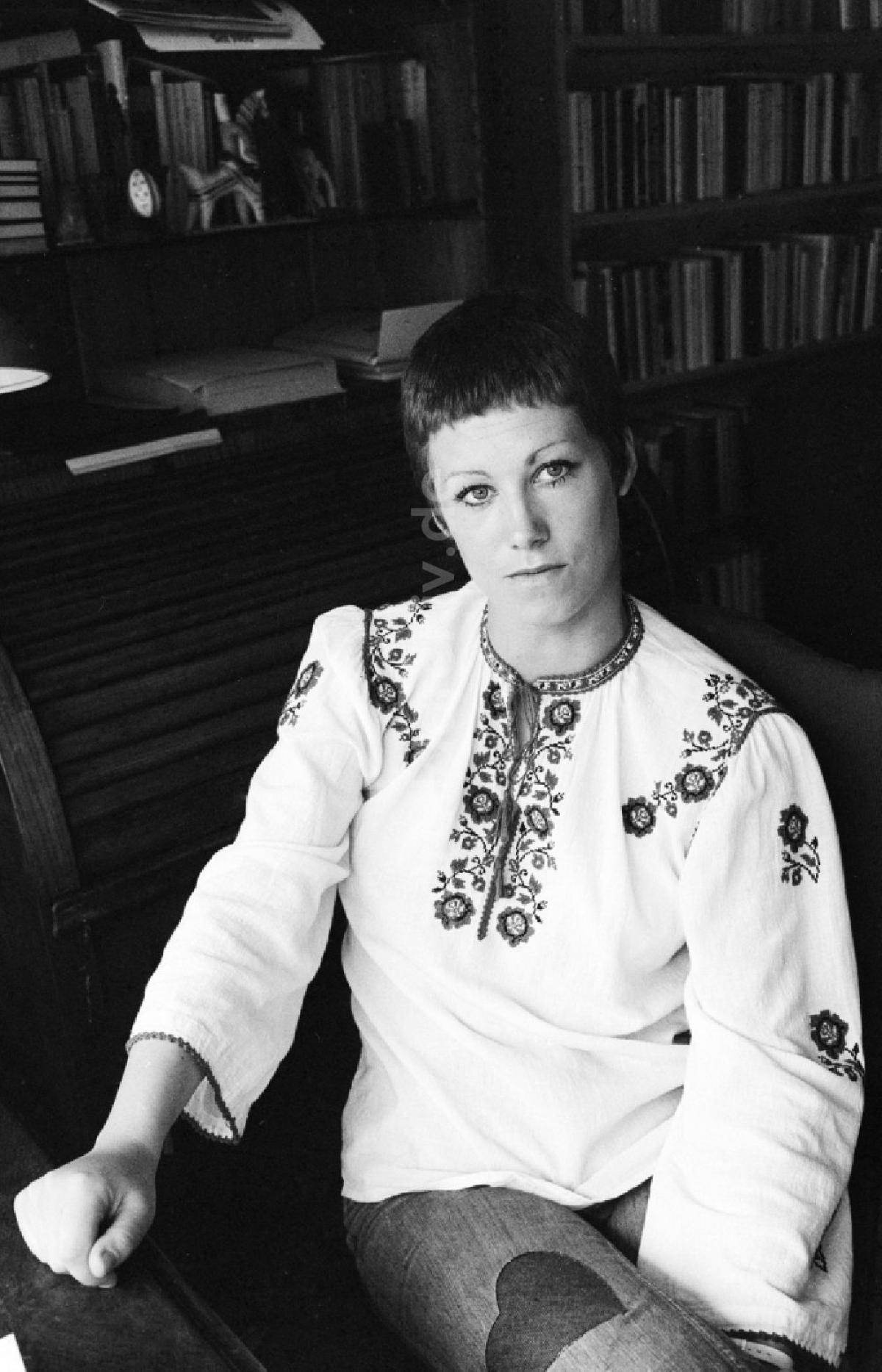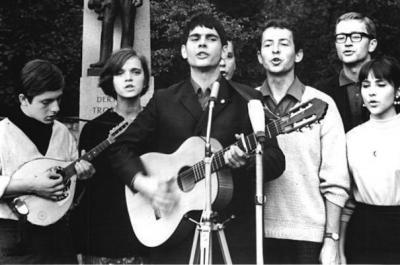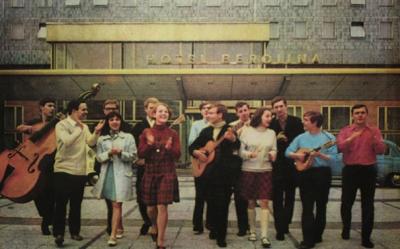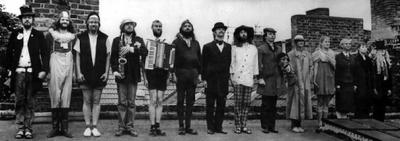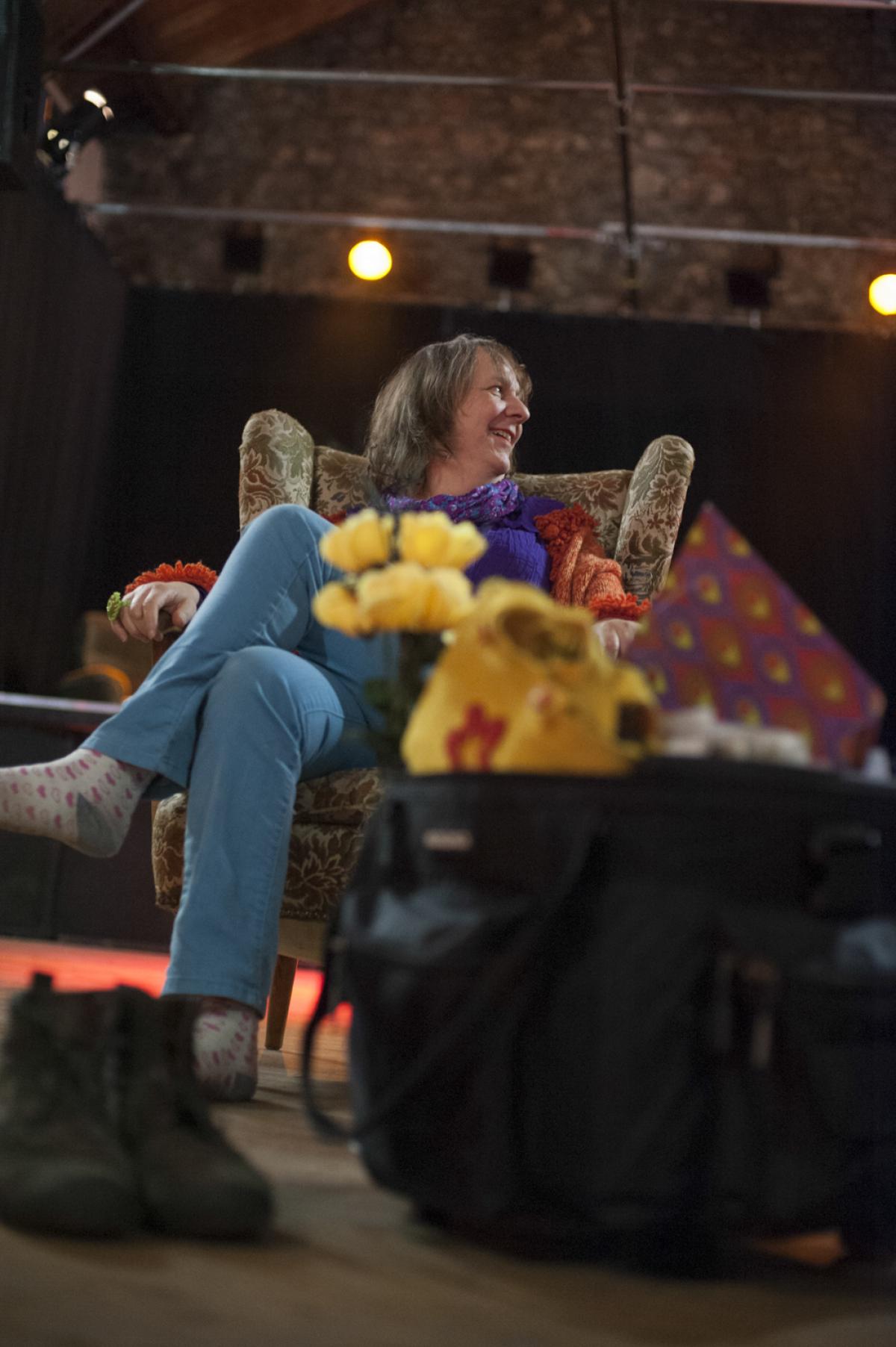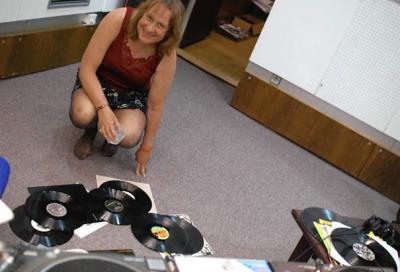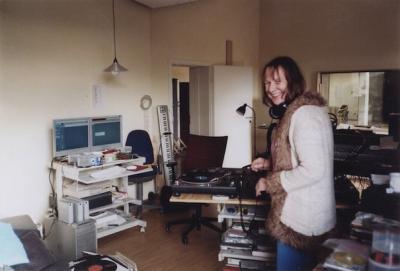Dj Marcelle – Another Nice Mess braucht eine Auswahl ihrer 15'000 Platten und drei Plattenspieler um u.a. Afrobeat, Avant Garde Techno, Breakcore, Cumbia, Drum'n'Bass, Dubstep, UK funky und experimentelle Sounds miteinander zu verquirlen und gegen den Strich zu bürsten. Im Norient-Interview spricht die radikale DJane, Radiofrau und geistige John Peel-Nachfolge aus Amsterdam von ihrer Mix-Philosophie, von Intuition und der politischen Dimension ihres Genre-Hoppings. Über ihr neues Album erzählt sie in der Minidoku von Klangbad/Wrangelfilm. Ein Interview aus dem Norient-Buch Out of the Absurdity of Life (hier bestellbar).
[Theresa Beyer]: Marcelle, regiert bei dir beim Auflegen eher Kopf oder Gefühl?
[DJ Marcelle]: Ich habe so viel Übung, dass ich weiss was funktioniert. Und da ich noch nie zweimal das gleiche Set aufgelegt habe, würde ich sagen: Gefühl. Mag es auch manchmal lustig wirken, was ich da mache – dahinter stecken unglaublich komplizierte Prozesse: Wie legt man drei Platten aus drei verschiedenen Stilarten simultan auf? DJing ist ja eine ziemliche Männerwelt und mir kommt es so vor, als sei sie arg auf eine bestimmte Technik forciert. Es gibt so viele Regeln, wie man auflegen soll. All diese Klischees wie zum Beispiel der Beat zu sein hat, das hemmt doch nur. Natürlich bin ich sehr konzentriert, aber ich habe meine eigenen Regeln, meine eigene Art von Disziplin gefunden. Aber ohne Phanstasie geht da nichts.
[TB]: Wie sieht denn diese Marcelle-Freiheit konkret aus?
[DJM]: Ich bin immer auf der Suche nach neuen Herausforderungen. Zum Beispiel Ende März in der Berner Dampfzentrale war ich der Meinung, ich wäre für einen Tanzabend gebucht worden. Vor Ort erschien mir dann aber die Atmosphäre viel experimenteller. Ich habe also spontan den Anfang meines Sets geändert und zunächst Glocken und Geräusche aufgelegt. Das war eine ganz besondere Spannung, die vielen Leuten gefallen hat.
[TB]: Wenn dein Set dann am Laufen ist, was erfährst du durch die Bewegung des Publikums über deine Musik?
[DJM]: Oft erwarten die Leute einen bestimmten Stil. Aber diese Schubladen langweilen mich. Ich denke alle Musik gehört zusammen: eine afrikanische Platte kann noch viel mehr Punk sein als eine so genannte Punk-Platte. Ich möchte auch immer einen Schritt weiter sein als mein Publikum. Sie dürfen nie ahnen können, was als nächstes kommt. Interessant ist: wenn ich eine Drum 'n Bass Platte auflege tanzt jeder. Doch dann habe ich erst recht das Bedürfnis das zu brechen und es darf auf keinen Fall mit Drum'n'Bass weitergehen. Da mische ich zum Beispiel eine ganz tolle neue afrikanische Platte hinein. Die Leute tanzen weiter und legen wie von selbst ihre Vorurteile ab, welchen Stil sie denn eigentlich mögen und welchen nicht. So ein Auftritt ist wie eine Reise durch die Welt, nur dass zu Beginn niemand die Destinationen kennt, ich ja auch nicht! Ich bin davon überzeugt, dass die einzelnen Stile an Qualität gewinnen, wenn man sie gegeneinander setzt oder miteinander mischt. Das ist doch irgendwie Politik, oder?
[TB]: Wie meinst du das genau?
[DJM]: Musik war für mich schon immer mehr als Unterhaltung. Es ist ein Versuch von Freiheit. Ich will auch im Alltag offen und unabhängig sein und diese Einstellung spiegelt sich in meiner Musik wider. Da ist aber auch eine andere Message: Bei meiner kommenden Platte, die im September beim Label Klangbad erscheint, verbinde ich in einem Moment Breakcore, Free Jazz und afrikanische Beerdigungsmusik. Daraus entsteht etwas vollkommen Neues, was so schön ist, dass ich richtig Gänsehaut bekomme. Diese Verbindung halte ich für politisch.
[TB]: Wo sind die Grenzen des Eklektizismus?
[DJM]: Alles mit allem geht natürlich nicht. Ich habe ja – so simpel das auch klingen mag – meinen Geschmack. Ich besitze unglaublich viele Schallplatten, aber unglaublich viele auch nicht – das heisst in der Vorauswahl trennt sich schon die Spreu vom Weizen. Allgemein mag ich Rock nicht so, mit diesen Macho-Gitarren... (lacht), oder Indierock – was ja seit langem schon nicht mehr für «independent» steht, sondern für eine Ansammlung von Gitarrenklischees. Ich muss bei der Kombination der Musiken immer die Balance finden und wissen, wie weit ich gehen kann. Aber dafür verlasse ich mich auf mein Gefühl für Stimmungen und schaue mir das Publikum haargenau an.
[TB]: Wie sehr hängt das vom jeweiligen Club ab?
[DJM]: In Bern war das Publikum am Anfang nicht sonderlich offen, ich habe es aber mit der Zeit für mich gewinnen können. Nach meinen Sets sagen mir viele es war eine Horizonterweiterung, sie hätten so etwas noch nie gehört und dass sie vom ewigen Minimaltechno in den Clubs gelangweilt wären. In Wien, Berlin und Hamburg, wo ich Resident Djane bin, kennt mich das Publikum schon und dort kann ich die Experimente natürlich viel weiter ausreizen. Ich verstehe aber auch, wenn die Leute bei meiner Musik flüchten, denn es ist schon irgendwie heftig. Wenn man gewohnt ist den ganzen Abend nur in der Minimaltechno- oder Electrosphäre zu schwelgen, dann ist meine Mischung definitiv ein Kontrastprogramm.
[TB]: Du hast eine unglaubliche Sammlung von 15'000 Platten. Wie findest du dich darin zurecht?
[DJM]: Sie sind alle nach Stil sortiert: afrikanisch, Dub, Industrial, Dubstep, Postpunk und so weiter. Aber weil ich so viel neue Platten kaufe, komme ich mit dem Sortieren nicht so richtig hinterher. Doch das hat auch seinen Reiz: es ist dann nämlich immer eine Überraschung wenn ich in einem bestimmten Regal zwischendrin auf etwas völlig anderes stosse.
[TB]: Warum bist du eine Vinyl-Fetischistin?
[DJM]: Ich bin mit Vinyl aufgewachsen und mag die ganze Ästhetik. Zum einen ist der Klang einfach viel besser. Aber auch die Hüllen sind doch viel schöner als so eine kleine CD-Hülle. Mp3-Dateien halte ich für seelenlos. Und wenn ich bei einem Set die Platten wechsele, gibt es mit den grossen 12''s auch etwas zu sehen. Dann merkt das Publikum, dass ich mich wirklich bemühe und nicht nur auf irgendeiner Computertastatur herumdrücke.
[TB]: Was stört dich an der zunehmenden Digitalisierung des Djing?
[DJM]: Djing ist heutzutage so wahnsinnig einfach geworden. Jeder kann sich aus dem Netz alles Notwendige herunterladen und sich DJ nennen. Ich finde durchaus, dass deswegen die Qualität der DJs gesunken ist. Wenn es so leicht ist an Musik zu kommen, wird man automatisch weniger kritisch. Meistens kaufe ich jede Platte selber. Das setzt voraus, dass ich mich auf eine Suche begebe, kritisch bin und nur das beste auswähle. Man sollte nicht immer den einfachsten Weg wählen. Ich bin der Meinung, dass es sich bei Kunst – in meinen Fall Musik – um eine Notwendikeit handeln muss. Es gibt so viele Bands oder DJ’s die einfach da sind, aber die man wohl nicht missen würde hätte es sie nicht gegeben. Da ist es eben einfach Spass, Unterhaltung, die man nach zwei Tagen wieder vergessen hat. Mir geht es hingegen um Tiefgründigkeit und Intensität, ich möchte unverwechselbar sein.
[TB]: Du mischst Gesänge tschechoslowakischer Massendemonstrationen, Glockenklänge, Froschgequake und Sounds von Dampflokomotiven in deine Musik. Wo bekommst du solche Platten her?
[DJM]: Die meisten Platten, die ich kaufe, sind ganz neue «seriöse» Tanzplatten: ich verfolge intensiv die neusten Entwicklungen und bin sehr neugierig auf Unbekanntes. Diese Platten kaufe ich in Plattenläden in ganz Europa. «Komische» Platten – wie die mit den Massendemonstrations-Chören – kaufe ich auf Flohmärkten, in diesem Falle in Bratislava. Und den antikommunistischen Chorgesang sollte man als Klang genauso ernst nehmen. Erstaunlicherweise entfaltet er sich wunderbar mit den Beats einer Platte aus Zaire. Und das will ich provozieren: Dass zwei völlig verschiedene Welten aufeinandertreffen und daraus etwas ganz neues entsteht. Diese Kombination ist übrigens auf meiner zweiten Klangbad-Platte aus dem Jahre 2010 zu hören.
[TB]: Worauf legst du Wert, wenn du zum Beispiel Platten afrikanischer Musik kaufst?
[DJM]: Für mich ist es dabei ein riesen Unterschied ob sie in Afrika aufgenommen wurde oder ob eine afrikanische Band in einem europäischen Studio war: da sind zu oft diese fürchterlichen Synthesizer dabei. Wenn die Bands plötzlich in einem teuren Studio sind, scheint wohl die Verlockung der ganzen Technik zu gross zu werden... doch am Ende klingt es dann meistens sehr glatt. Ein Grund, warum ich diese Musik so aufregend finde, ist doch irgendwie ihre Rohheit. Und das ist eben auch so eine wunderbare Vinyl-Ästhetik.
[TB]: Wie bist zum Djing gekommen?
[DJM]: Ich habe sehr früh meine Eltern verloren. Ich bin 1962 geboren und 1976/1977 war die Punkbewegung, deren Ästhetik mich unglaublich inspiriert hat! Davor gab es vor allem schrecklichen Prog-Rock und viel bombastische Scheisse. Damals ging es mir sehr schlecht. Die Musik war eine Art Trost, sie hat mir geholfen zu überleben.
[TB]: Wie ging es dann weiter?
[DJM]: Da ich schon immer ein Faible für Sprachen hatte und gut schreiben konnte, habe ich lange als Journalistin gearbeitet. Ich habe auch Politik und Englisch studiert. Ich habe aber nie abgeschlossen, weil ich es immer schwierig fand, eine Sache wirklich ambitioniert durchzuziehen. Die musikalische Ader konnte ich vor allem in meinen Radiosendungen ausleben. In Clubs habe ich anfangs nur ab und zu aufgelegt, denn irgendwie war mir diese DJ-Welt zu hart.
[TB]: Wann hast du dann entschlossen, dich dennoch auf diese Welt einzulassen?
[DJM]: Ich war lange mit John Peel befreundet. Als er 2004 starb, kam aus England plötzlich sehr viel Interesse für meine Radiosendungen. Ich habe dann auch seriös angefangen aufzutreten und es kam gut an, ich bekam mehr und mehr Angebote: zum Beispiel wollte das deutsche Klangbad Label Platten von mir veröffentlichen. Mittlerweile bin ich sehr viel unterwegs und kann vom Auflegen leben.
[TB]: Wie stehst du zu dem Ruf John Peels Nachfolgerin zu sein?
[DJM]: Naja, es wurde gesagt, ich hätte mit meinem Stilmix eine ähnliche Attitude wie John Peel. Seine Nachfolgerin zu sein, würde für mich aber vor allem bedeuten, mein eigenes Ding zu machen und ihn nicht einfach zu imitieren. Es geht darum, seinen Geist zu übernehmen, originell zu sein und Grenzen zu verlegen. Die Behauptung, dass früher alles besser war, kann ich nicht mehr hören. Es wird immer tolle und spannende Musik gemacht, dafür sollte man offen sein!
[TB]: Neben dem Auflegen produzierst du ja nach wie vor Radiosendungen und hast das Duo Fodderstompf. Wie unterscheiden sich diese «Identitäten»?
[DJM]: Bei meinen Sendungen präsentiere ich die neuesten Platten, kombiniert mit früheren Sounds aus meine Sammlung – es ist eine Art Musikdokumentation, die ich in den Moderationen kommentiere. Live rede ich nicht und lege auf drei Plattenspielern simultan auf, wobei mir ständig verrückte Ideen kommen. Wenn ich mit dem Kölner Perkussionisten Holger Mertin als Fodderstompf arbeite, geht es noch einen Schritt weiter. Es ist ein Avantgarde-Projekt, das ich sehr mag. Auch dort treffen verschiedene Welten aufeinander: Er hat eine Ausbildung an der Musikhochschule und ich bin völlig «do it yourself». Da er nicht einfach nur bei mir mitspielt, wird das Ganze zu einem richtigen Klangerlebnis. Ich habe sehr viele Platten dabei und wir fangen an zu improvisieren. Auch hier ist viel möglich und wir nehmen uns die Freiheit auf das zu warten, was uns unsere Intuition einflüstert.
